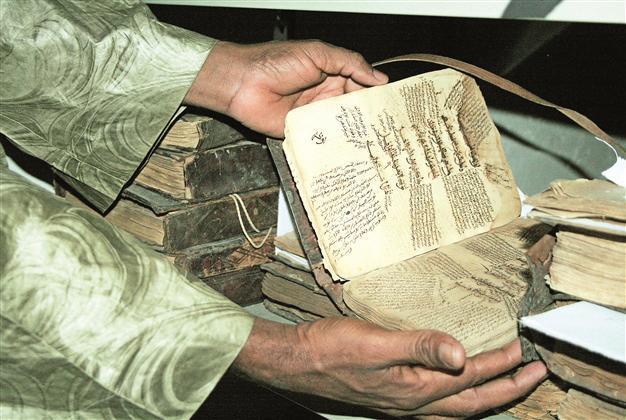

"What we have here is the history of Africa, the history of the world. Alkhamiss in front of his apprentices whose gestures he inspects with a vigilant eye. If they degenerate, it is a heritage and a knowledge lost forever," warns Mr. "When they are handled, the manuscripts are subject to deterioration. The institute in Timbuktu has about 10,000 of them. While an estimated 4,203 works were destroyed during the occupation, 300,000 of them are still kept in Bamako, waiting for the security situation to stabilize in the north. “Those who saved the manuscripts took all the risks.” “There have been a few miracles," says Mohamed Diagayete. The insolent were punished, and many cultural and heritage assets were lost. That's why there have been so many efforts to save them.Īt the time, the threat was an entirely different one: that of heavily-armed fighters aboard pickup trucks flying the Ansar Dine and al-Qaeda in the Maghreb flags. The manuscripts don't belong to Timbuktu, they belong to the whole world. Alkhamiss, head of the conservation laboratory. “Some were hidden in the neighborhoods, others left for Bamako on carts, on donkeys, on dugout canoes, in trucks," says Mr. In 2012, many works, still preserved in Timbuktu, left the north of the country in extraordinary conditions under the occupation of jihadist groups. Marked by the passage of dust, insects and bad weather, the manuscripts must again be saved. At the time, the precious codices were piled up between Timbuktu and Bamako. Long left to the mercy of time and wear, these relics have been the subject of a safeguarding plan since 2015, under the impetus of several international partners such as UNESCO. This ethnocentric version is contradicted by hundreds of thousands of pages of travelogs, poems and scientific treaties. The precious works, which date back to the 9th century, provide a historical correction to the redundant narrative that has always reduced Africa to just oral traditions, denying the continent its rich written history. It is extremely important that these manuscripts, witnesses of this glorious history, be revalued and adapted to the current context," says Boubacar Ould Hamadi, president of the interim authority of the Timbuktu region. "Timbuktu has shone brightly in history, and the crisis it has been going through for several years has caused it to fall far behind.

The manuscripts belong to the whole world The manuscripts, whose origins trace from Niger to Mauritania through Algeria, are witnesses of the past greatness of the region.

The thousand-year-old city, which was a crossroads of trade and knowledge in medieval times, has seen an influx of researchers and apprentices from all over the world who have come for training. Since 2019, Diagayete has directed the training of codicologists, curators, librarians and those leading digitization efforts who will be responsible for making this heritage live on in the future. They are wells of science and knowledge, dealing with astronomy, medicine, arithmetic, theology or law.” Beyond saving these manuscripts, it is a question of highlighting the history they tell. Mohamed Diagayete, director general of the Ahmed-Baba Institute, says of the unique role of the city in central Mali: "In Timbuktu, we find manuscripts from all over the region, witnesses of the richness of the exchanges that took place here at one time. There are about 30 of them, coming from all over the country to be part of the second class of book and ancient manuscript professionals within this emblematic establishment in Timbuktu. As the dust and the sound of brushes on paper float by, six students hold in their hands one of the most precious heritages of the region.Ĭeremoniously, they repeat the same gestures: lifting the pages, one by one, with the tip of a thin wooden spatula, then, with the flat of the brush, ridding the inks and the centuries-old papers of dust. Dr.TIMBUKTU - In the workroom of the Ahmed-Baba Institute of Higher Studies and Islamic Research, time seems to have slowed down.Elena FitzPatrick Sifford on casta paintingsīIPOC Reader: Teaching Practices and Strategies with… Reframing Art History, a new kind of textbook.Not your grandfather’s art history: a BIPOC Reader.With 503 contributors from 201 colleges, universities, museums, and researchĬenters, Smarthistory is the most-visited art history resource in the world. We believe that the brilliant histories of art belong to everyone, no matter their background. At Smarthistory, the Center for Public Art History, we believe art has the power to transform lives and to build understanding across cultures.


 0 kommentar(er)
0 kommentar(er)
